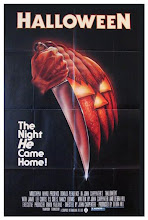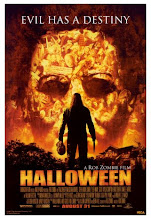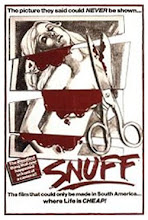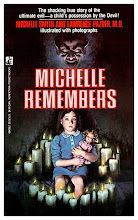In recent years, it has become increasingly popular for Hollywood to produce remakes of classic (and not-so-classic) films. Such a production is a reflection of Hollywood’s lack of originality, or a studio’s desire to update a property or franchise so that it will be more receptive to a younger generation, or a filmmaker’s sincere attempt at revisioning a film that inspired them. Whether it is ultimately a financial or artistic decision, this practice has caused much controversy among filmgoers, casual and serious alike. One such film, at least among fans of the horror genre, is Halloween.
Originally released in 1978, this low-budget film not only inspired an entire horror sub-genre—the slasher film—it also inspired a big-budget remake that was released twenty-nine years later. Although the two share the same source material, both films are markedly different, especially in respect to their production values, their sense of aesthetics, and the underlying thematic elements.
In his third outing as director, John Carpenter (1948-) took his first stab at the horror film genre, Halloween, which cost the studio $320,000 when all was said and done. Despite the modest production values, the film grossed over forty-seven million dollars in the United States alone, and proved to be the highest grossing independent film made up to the time of its release.
Although technically competent, the film bears many earmarks of a low budget feature. Even though the action takes place in the fictitious town of Haddonfield, Illinois, the backdrop is obviously Southern California, as the occasional palm tree attests. Short on the cash with which to hire recognizable celebrities, the cast is instead comprised of B-film veterans and virtual unknowns. Cinematography that would rely on tracked dollies in more commercial efforts is instead the product of handheld, almost cinema veríte-style camerawork. Special effects are kept to a bare minimum. A modest film, the same couldn’t be said for the remake it inspired.
In what would be his third directorial outing as well, Rob Zombie née Robert Cummings (1965-) offered his distinct revisioning of Carpenter’s classic slasher film. It was made on a healthy Hollywood budget of twenty-million dollars, a far cry from the original, which was made on less than 1/60 of the remake’s budget. Zombie’s updating grossed around sixty-million dollars in the United States; although the profits were enough to garner the announcement of a forthcoming sequel, the profit margin wasn’t nearly as impressive as the original’s unprecedented success.
Inherently far more professional that Carpenter’s film, Zombie makes an honest attempt to retain the distinctly 70s feel of the original by mimicking it on a technical level. Again, the film was shot in South California, even though the action took place in the mid-west. Despite the money at Zombie’s disposal, he purposely chose to populate his cast with B-film veterans and virtual unknowns. (Among the seasoned actors were many names easily recognized by fans of 1970s drive-in fodder.) One of the most notable differences is the heavy use of special effects; with an effects budget that far surpasses the cost of its predecessor’s entire production, Zombie spared no effort in making the murders as gruesome and realistic as the ratings board would allow; whereas most of the violence in Carpernter’s version was concealed in shadow, Zombie kept the carnage well-lit and always within sight of the camera’s unflinching eye.
Production values aside, aesthetics are an important aspect of both films. The major factor behind the original film’s success is the presence of the director’s distinct style. Although the material would have proved pedestrian in the hands of a less talented filmmaker, Carpenter’s unique choreography creates a building momentum of suspense punctuated by abrupt shocks. Owing much to the likes of Alfred Hitchcock and Howard Hawks, the pacing is terse, with tension generated from the use of nearly subliminal cues, both visual and musical. The score verges on minimalism, its 5/4 time signature entirely composed by a piano and a keyboard vying for dominance with only a handful of notes at their collective disposal.
The sequel, though, is a much different animal. Knowing that he was incapable of recreating the level of suspense found in the original, Zombie instead drew upon the strengths he displayed in his previous film The Devil’s Rejects (2005) by depicting the proceedings in a straightforward, brutally realistic manner. (As mentioned earlier, the liberal effects budget allowed for such excesses.) The remake relies far more on outright shocks than carefully orchestrated tension, which—intentions aside—seems to reverberate more with today’s jaded filmgoers.
As disturbing as the violence is in both films, what wormed their way under most viewers’ skin are the themes. In the original, antagonist Michael Myers is portrayed as a faceless, emotionless husk whose bloodlust is his sole purpose for existing. Michael, as a child, is seen only in a brief introduction, with most of the film’s running time devoted to his crimes as an adult. No motives are offered for his compulsions, no childhood trauma is evoked, his inexcusable actions beyond all rational explanation. He is the epitome of evil, as a society might have defined it. Carpenter endeavored to create a character with whom people could not identify, and in this sense he succeeded.
When Halloween was released in 1978, the United States was in the clutches of a growing phenomenon of serial murders. Citizens were more than ever being preyed upon by killers unknown, who were driven by their twisted psyches as opposed to personal gain. Psychopaths like the Zodiak Killer and Son of Sam even went so far as to gloat to authorities about their bloodied exploits whilst eluding capture. Although some would eventually be caught, others remained anonymous. In this way, Halloween reflected this mass anxiety: Michael Myers symbolized the country’s futile attempt to put a face to the name, and their fears of a bogeyman that preyed upon the unwary and unsuspecting.
Thirty years later, serial killers are no longer beyond our general scope of understanding. With the growing art and science of criminal profiling, we have since put faces to many of the once unthinkable crimes. These killers are more often than not the product of childhood abuse, their actions the direct result of extreme conditioning.
In Zombie’s 2007 remake, Michael Myers is no longer a motiveless killer, and the mask he wears no longer reflects the utter lack of identity, but symbolizes the harsh cruelty of a life gone horribly wrong. Half of the film is devoted to the years preceding the inevitable All Hallow’s Eve massacre. We see the dysfunctional family that spawned Michael, and the progressive deterioration of personality while he is institutionalized for the murders he committed during his youth. As we have learned about most serial killers in the last three decades, he is no longer an enigmatic aberration, but a victim whose bloodlust is fueled by personal demons and an untethered id. Although Zombie’s end result of the character seems much like Carpenter’s, we are given the chance to identify with Michael Myers early on, which in some ways makes his character even more frightening.
In closing, the original Halloween and its 2007 remake are disparate visions of the same source material by two very unique, talented voices. Despite a few similarities in tone, the differences are marked, especially when it comes to the films’ sense of aesthetics and the thematic elements they wish to convey. Both are the products of their times, and so they appeal to two very different generations of filmgoers. As such, the controversy will continue between the two camps of fans that have supported these efforts.
Subscribe to:
Post Comments (Atom)

+One-Sheet.jpg)
+One-Sheet.jpg)
+One-Sheet.jpg)

No comments:
Post a Comment